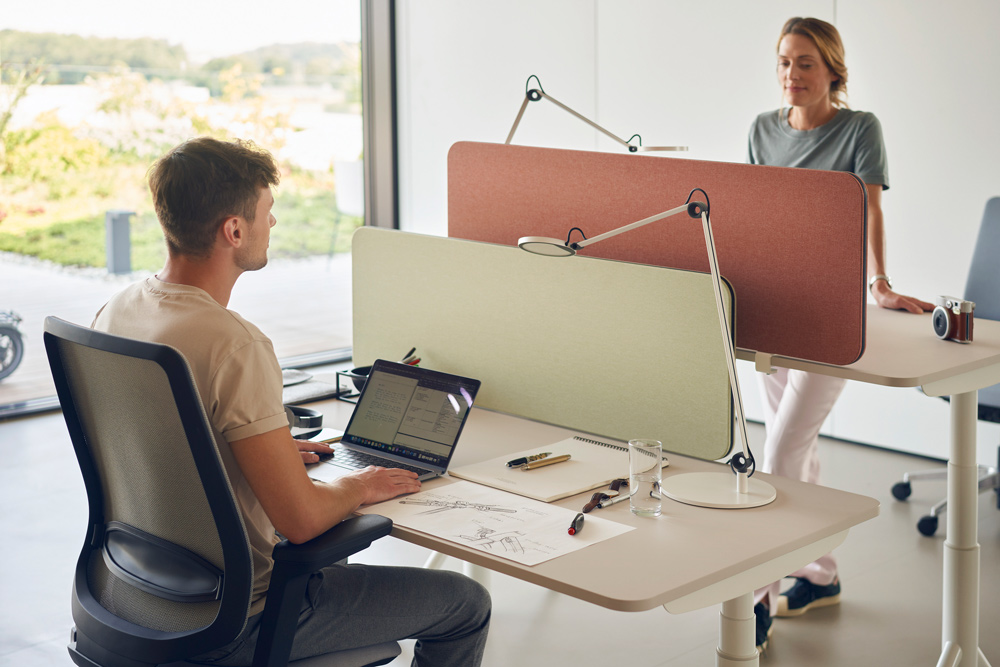Caring about your employees’ well-being means more than just providing the right office chair. Physical ergonomics are clearly very important. But did you know that cognitive ergonomics and organisational ergonomics play a major role in working healthily too? A strong well-being policy takes all aspects of ergonomics into account.
The basis of your well-being policy: physical ergonomics
Ergonomic seating is the first thing we think about when it comes to physical ergonomics. All of us still spend far too much time sitting down, so we might as well do it right. Or better still: add enough variation. With a sit/stand desk, for example. Or by being able to take a break and walk around now and then without getting disapproving looks.
Because we are less and less likely to have a fixed workplace nowadays, it is also worth thinking about how we use our laptops. It isn’t a good idea to work on a laptop for a long time without ergonomic accessories. Studies have shown that two hours is the absolute maximum. So it’s high time to put that knowledge into practice, both at the office and in our home offices.
Can your employees move around enough during their working day? And do they always have a good, ergonomic workspace, all the time, wherever they are? Physical well-being is the absolute minimum for a good well-being policy.

There is more to it than that: cognitive and organisational ergonomics
Cognitive ergonomics means the question of whether the way we work is well attuned to our cognitive abilities. Those abilities include mental processes such as perception, memory and reasoning. The way we work often has more influence on our mental well-being than we think. Lighting influences our sleeping patterns. And we all know that noise affects our concentration. But other things matter too, such as clear instructions, enough variation in tasks, a workload adapted to each person’s mental abilities and so on. As an employer, bearing these things in mind can result in less stress and better performance.
If the organisational ergonomics are ideal, there is trust between staff and management, and the culture and policy of a company create a good working atmosphere. What does that mean in practice? It might mean that an employee can work different hours, adapting their activities to their needs. They might start work very early so that they can stop at 3 p.m. to collect their children from school. Or work late in the evening because they are most productive at that time of day. Other important issues are teamwork, working from home, evaluations, etc.
Ergo-Lab calls on businesses to take positive responsibility. There is so much you can do to contribute to your employees’ well-being. Ergonomics are a good guideline to help you draw up a strong well-being policy. Don’t you think so? Ergo-Lab looks forward to offering you advice.
